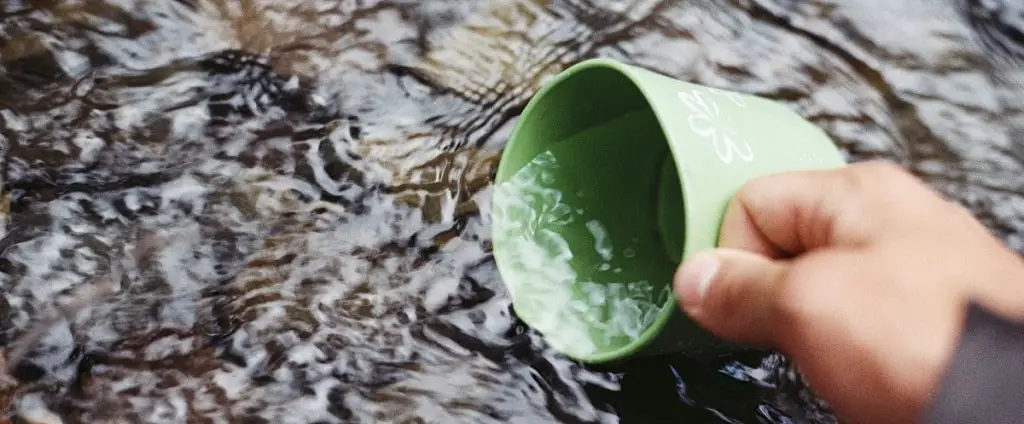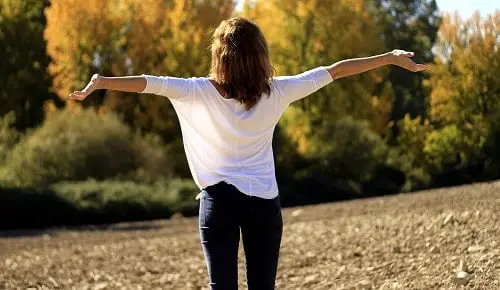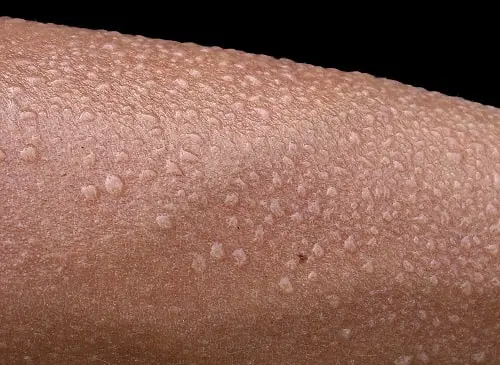If you show interest in outdoor activities, you’ve probably asked yourself what the minimum amount of water needed per day to survive is. The main reason behind this question is that many times we are in situations where the water is limited and we have to stick to the minimum. So what are the numbers and what are the primary factors taking a role in the equation? Well, let’s dive right through it.

The minimum amount of water needed per day to survive is around 1 liter – this way you consume at least the amount of water you lose, which is mainly through urination, breathe, digestion and sweat.
I base this answer on an in-depth article written by the National Academies Press, which by itself relied on countless different articles.
A Research by The National Academies Press
One of the most reliable sources regarding science, engineering, and medicine is NAP – the national academies press, which published over 200 books a year regarding those topics.
Since it is such an authoritative data source, I was glad I could gather you some information from an in-depth study they have made.
The writers took into account all the different ways we could lose water and came up with a range of 1,050 to 3,100 mL/day.
Since the water intake should be less than the output, the minimum amount of water needed per day to survive should be around 1 liter.
Nevertheless, it is essential to mention that the sweat conditions they based these numbers on were minimal, and the people that were studied were healthy sedentary adults.
Therefore, in outdoor activities that involve a lot of sweat, the numbers are much higher than that, and we should consume much more than 1 liter to survive.
How do we Lose Water?
To get a better understanding of how much water we need to drink, we first got to understand how exactly it gets lost. In general, there are four main ways to excrete water; respiratory loss, urinary loss, fecal loss, and insensible loss.
The following elaboration is based on the same research made by NAP which I’ve mentioned earlier.
Respiratory Loss (250-350 mL/day)
Typically, our lungs contain water molecules all along the respiratory tract.
When we exhale, these molecules evaporate to the outside air and new particles, within our body, take their place. Therefore, when we lose water due to respiration – we become more and more dehydrated.

This loss depends on two factors – the rhythm of our breath and the vapor pressure gradient. The first is easy to comprehend – the more quickly we breathe, the more water we will lose.
The second is a little more complicated, although in general, it means that environmental conditions also influence water evaporation.
In dry conditions, it is easier for water molecules to evaporate and we lose water more quickly (that is also what happens when we hang wet laundry and surprise how fast it dried).
On the contrary, under humid conditions, we lose less water since it is harder for the molecules inside our lungs to take off.
Urinary Loss (500-1,000 mL/day)
Another way to lose water is by urination. Our kidneys are the organs who account for this, and their main purpose is to regulate our blood volume and substances excretion/retention.
The kidneys respond well to the water volume in our body and therefore secrete much less when we begin to dehydrate:

In healthy, young adults these organs can very well limit water secretion by concentrating the urine – therefore, the minimal amount of urination could then reach the levels of 500 mL/day.
On the other hand, older people’s kidneys have a pooper performance and could concentrate urine less – hence, there is an elevation with minimal water excretion (700-1080 mL/day).
Fecal loss (100-200 mL/day)
Yes, as much as it is unpleasant to discuss it – we do lose water via feces. The numbers mainly depend on its content – we all know that diarrhea could get us extremely dehydrated. Hence, the researchers focused on healthy subjects with a normal fecal water-loss.
Insensible & Sweat Losses (450-1,900 mL/day)
There are two primary ways in which we can lose water through our skin – it could be via sweat or otherwise – insensible loss. Again, the first factor is quite obvious, although a few know that we lose water even on resting – when there is no sweat whatsoever.
That process happens due to water diffusion through the cells of our skin – water gets secreted consistently as we focused on our daily work.
Still, the loss via the insensible process is relatively smaller than the amount we actually lose under heavy sweats. This, of course, depends on our body temperature and the surrounding conditions.
When temperature elevates, the sweat glands upon our skin start working, and the body cools itself down by water evaporation.

The environmental conditions also play a role, as mentioned. It is much more likely to lose water when hiking in the desert comparing to tropical forests, for example, probably due to a lower ambient temperature in the first.
How do we Gain Water?
The first and known way we gain water is by eating and drinking; it doesn’t have to be pure water – foods and soft drinks by themselves contain a considerable amount of it. Besides that, we also gain water by metabolic processes that occur within our bodies.
That typically happens due to oxidation of substances in our food – a production of about 110 grams of water per 100 grams of fat, 42 grams of water per 100 g of protein and 60 grams of water per 100 g of carbohydrate.
Still, sweet drinks and salty food wouldn’t do you any good even though they might contain water – they would increase your blood osmolarity and make you even more dehydrated.
Hence, when you spend your time camping, I suggest that you learn some other techniques to gain water without risking yourself.
For that purpose I’ve written a whole article regarding the water boiling process which kills bacteria – I’ve spent hours pouring through the data so that you might safely drink the water around your campsite.
How Can I Know if I’m Dehydrated?
When we talk about the minimal amount of water need to survive, one has to take into account the possibility of getting dehydrated.
From my experience, the symptoms which indicate severe dehydration are usually headaches, nausea, lightheadedness, and fainting.
When we start losing water more than we consume – our kidneys will try to compensate it by concentrating our urine through water reabsorption.
Hence, the urine color will begin to change – dark yellow to amber urine means you may have mild to severe dehydration.
If you start experiencing one of these symptoms – the first thing you have to do is drinking. Avoid sweet drinks and salty foods – these would only make the situation worse.
Find yourself a shaded area and stay there until you get professional assistance. If you are camping alone – make a rescue phone call.
If you are out there with your friends – let them take care of you while you keep on resting.
Rationing Water vs. Consumption
Water rationing is when you start calculating its consumption and begin to think whether you should drink it or leave it for later.
You may encounter that dilemma when you go outdoors and have a limited amount of water or merely at your house during a pipeline break.
From my experience, when you go on camping and spend some time in the wilderness – do NOT ration water – it is better inside rather than outside your body.
Even when you have a limited amount – drink what you have, and your body would take care of the rest. If you are closed to dehydration, your kidneys, digestion system and metabolism will adjust to the situation.
Frankly, I think you should avoid the question this whole article is about – you shouldn’t limit yourself to the minimum, and you should always take extra.
Can You Survive on One Glass of Water a Day?
As I’ve said at the beginning – the minimum amount of water required to survive is around 1,000 mL – as long as you aren’t under extreme sweat conditions. If you can reach that amount, you will be one step behind dehydration, although things should be okay.
If you can achieve 1 liter by drinking one glass of water a day (taking into account the food and metabolic water) – you can survive on one glass a day.
Still, consider that if you are doing any irregular activity – such as hiking, working or playing around – you would probably have to drink more than that.
How Much Water do You Need to Survive in The Desert?
When I was talking about 1 liter of water a day to survive, I relied on an article which took into account average weather conditions.
Still, if you are planning to hike in the desert – things are going to be much different. In fact, in such hot climates, you would probably need four times more – around 4 liters a day.
In the desert, you should take out of your head the thought of keeping the water consumption to its minimum – on the other hand; you should pack the maximum amount you can possibly carry.
If things start to burden your back, you can do the trick I’ve used back in Israel – burying the water in the ground beforehand.
If you wish to hike in the desert and own a vehicle – load it with water and drive to different spots along the trail. When you reach a shaded area which seems easy to recognize – bury the water in the soil and move on to the next location.
How to Manage Water While Camping?
First, outdoor activities are unique, and you should avoid rationing water or asking yourself how can I keep water to the minimum merely to survive.
Also, you should read carefully and learn your surroundings, so you get a better idea about the weather conditions and water source spots.
For example, before I was hiking the West Highland Way in Scotland, I downloaded the trail’s map and noticed that it had several tap points in which I could refill my empty bottles.
Also, I saw that the trail passes by several towns with grocery stores, which means I could merely buy new water bottles instead of overburdening my back.
In fact, I was talking about this tip on my article regarding 45 camping tips that actually make a difference – please take a few minutes to go through it – I’ve gathered you there years of experience and lessons learned from bad decisions.
Second, I recommend that you talk to the locals and merely ask them how much water they would have brought if they were in your place – you might be surprised by what you hear.
I would also suggest that you water some Youtube videos and see what other hikers have packed to their journeys – there is no better source from those who actually done this before.
Conclusions
To survive, we have to gain at least the amount of water we excrete.
The primary ways to lose water is through urination, digestion, breathe and sweat, which account to a minimal loss of 1,050 to 3,100 mL/day (assuming there aren’t any extreme, hot conditions).
Therefore, we have to drink at least 1 liter of water to survive.
Still, all of this means a grain of salt since the conditions are usually far from optimal, especially when we consider this kind of question.
The more accurate answer would be not rationing water consumption at all – on the opposite, you should drink as much as you can and let your body take care of the rest. There are many ways to manage water while camping; a few I’ve already mentioned above.
My general advice to you is getting familiar with the environment – considering weather conditions and water sources opportunities.
I hope my article has pointed you in the right direction and answered your question. If you have any new insights or hesitations – let me know all about them by leaving a comment below!

